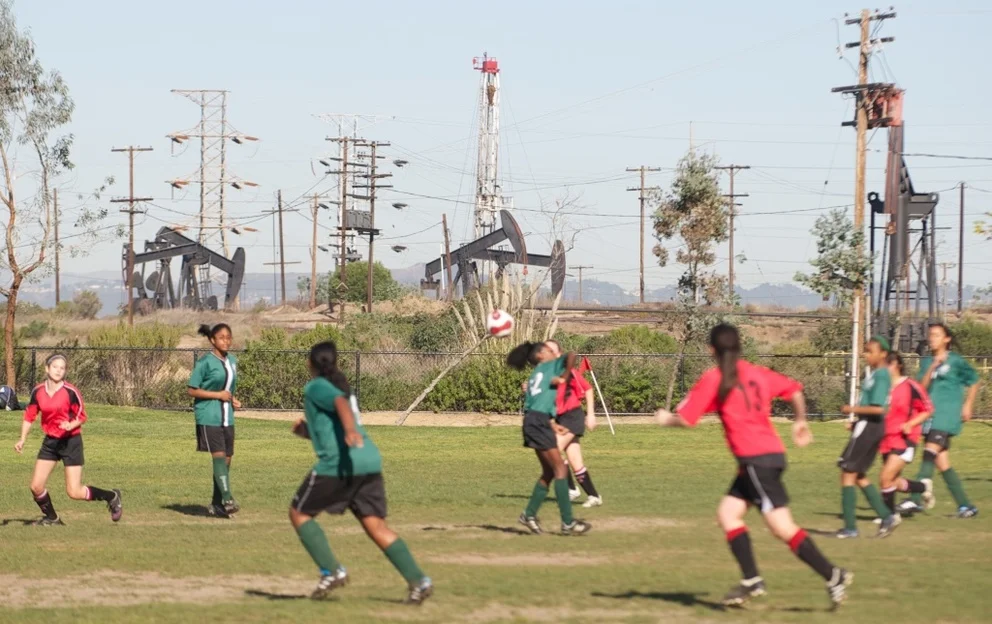
New Year’s Resolutions We Must Keep
Gary Gero, the County’s Chief Sustainability Officer, makes eight vows to improve quality of life throughout greater L.A.
With the coming of the New Year, many of us vow to make a fresh start, turn a corner or renew a forgotten commitment. After an indulgent holiday season, we make resolutions to live more wisely – whether it’s cutting down on sweets or putting money into savings.
Greater Los Angeles is on the cusp of a similar transformation, with an ambitious plan that enables people to step back and take a breath of fresh air – literally.
After considerable community engagement, the L.A. County Board of Supervisors last fall adopted the nation’s most ambitious regional sustainability plan, called OurCounty L.A. My team at the Chief Sustainability Office conducted hundreds of community workshops to develop the guidelines, which contain dozens of recommendations for improving quality of life throughout our region.
A new decade is the time to tackle many of our region’s most intractable problems, from air pollution that sickens our children to a crisis of inequality that leaves nearly 60,000 people sleeping on the streets each night.
The detailed roadmap envisions streets and parks that are accessible, safe, and welcoming to everyone; air, water, and soil that are clean and healthy; affordable housing that enables all residents to thrive in place; and a just economy that runs on renewable energy instead of fossil fuels.
OurCounty L.A. is no visioning exercise. It lists a dozen overarching goals and 159 action items. As we embark on 2020, we are committed to the following eight resolutions.
Making Los Angeles County 100% fossil-fuel free by 2050. We’re architecting a zero-emission energy and transportation system that will result in full carbon neutrality. That means phasing fossil-fuels out of our buildings, eliminating dirty fossil-fueled vehicles from roadways, and developing a “sunset” strategy for all oil and gas operations that protects workers and their families.
Sourcing 80% of water locally by 2045. L.A. now imports nearly 60% of its water, which requires enormous amounts of energy and money. We can flip that wasteful ratio through increased conservation, wastewater recycling, stormwater capture and aquifer cleanup.
Building more than 500,000 affordable housing units by 2045. To prevent the displacement of low-income households across the County, we need at least a half-million new affordable homes. To help ease the affordability crisis, planners are drafting an inclusionary ordinance that incentivizes the construction of mixed-income housing.
Diverting more than 95% of waste from already-taxed landfills. We need to build infrastructure that gets food and yard waste out of landfills. We need to fundamentally re-think our use of plastics and other items that actually aren’t recyclable regardless of what their packaging says.
Decreasing childhood asthma prevalence to 5%. Beyond larger emission-reducing initiatives, the County commits to more protective siting of parks, schools and homes from freeways, refineries and other sources of air pollution.
Demanding that 100% of rivers, lakes and the ocean meet federal water-quality standards. Thanks to voters, the newly enacted Measure W will fund the building of green space and other natural solutions to capture, clean and reuse billions of gallons of runoff before they can pollute our waterways.
Ensuring that 50% of all trips will be by foot, bike, micromobility or public transit by 2045. Some 90% of commute trips are taken in automobiles, creating air pollution, dangerous streets and maddening gridlock. To improve quality of life and reduce harmful emissions, we will build dedicated bus and bike lanes, focus new housing development in areas within a half-mile of high-frequency transit, and create policies that prioritize people over cars.
Making our communities safer in the face of the climate crisis. We are implementing strategies to cool our communities with shade and lighter colored surfaces, limiting new housing development in areas prone to wildfire, and preparing actively for rising seas and inland flooding.
The County is already taking concrete action to further these goals. We are readying an ordinance that would limit single-use plastic food and service-ware in unincorporated areas of the County, which are home to more than 1 million people. A proposed measure will help decarbonize buildings by phasing out emission-causing natural gas in new construction. We will also require builders to maximize on-site water reductions and support off-site water conservation to reduce the amount of water used by new developments to zero.
Environmental problems don’t stop at jurisdictional boundaries. The County’s 88 cities, large and small, must work collaboratively to secure a better future. In the coming year, we ask you to consider what you can do to support this vision. What steps can you take to reduce your energy use, water use or waste? Make these steps a part of your daily life — be it taking public transit more often or redoubling conservation efforts.
New Year resolutions are far easier made than kept. Only 25% of people actually stick to them after just one month, according to studies. But some vows simply must be kept. These sustainability initiatives are achievable. We can and will do this together.